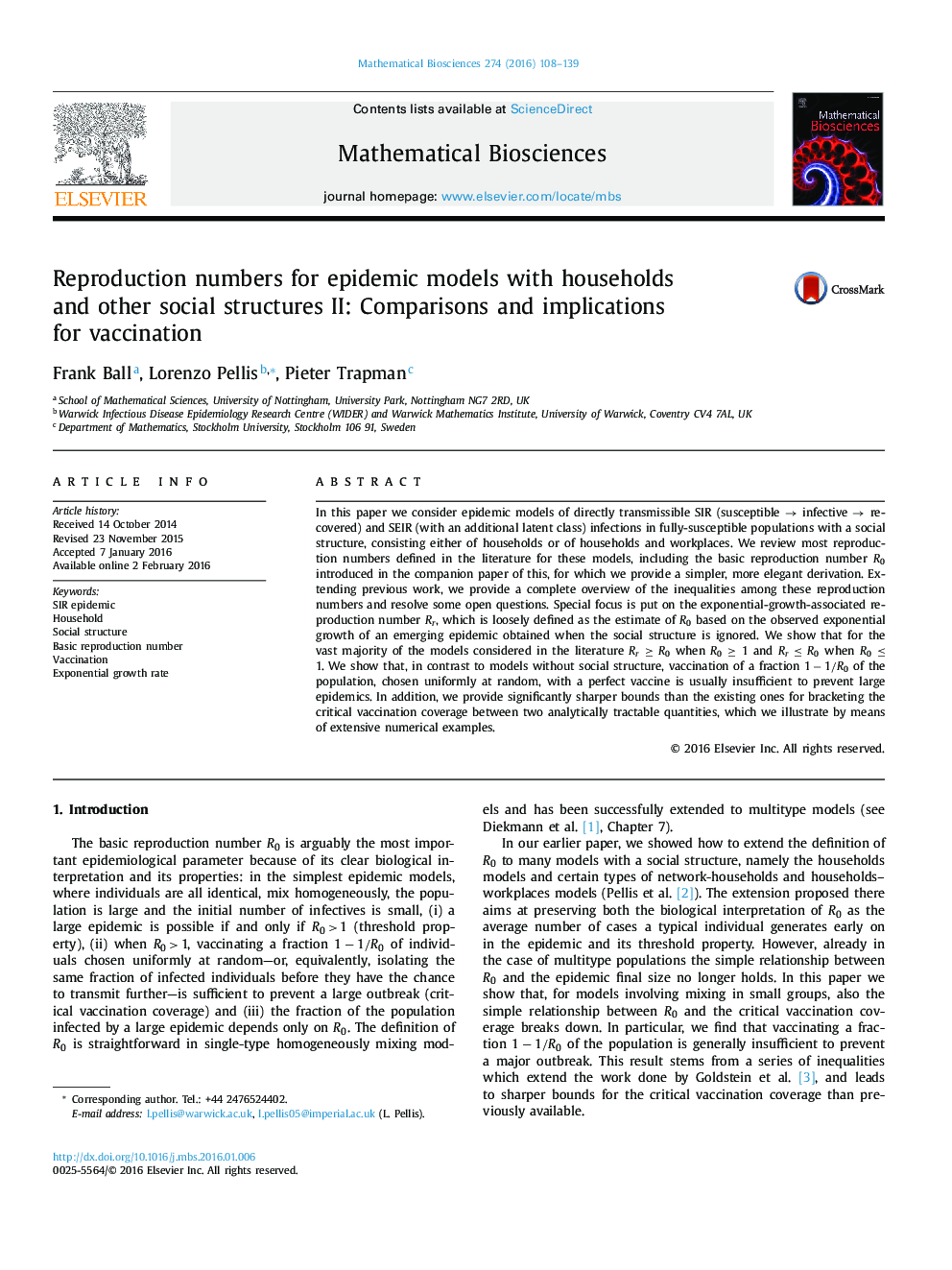| کد مقاله | کد نشریه | سال انتشار | مقاله انگلیسی | نسخه تمام متن |
|---|---|---|---|---|
| 4499863 | 1624006 | 2016 | 32 صفحه PDF | دانلود رایگان |

• We provide a more elegant derivation of R0 for models with households/workplaces.
• We review and compare virtually all reproduction numbers for models with households.
• We derive analytically tractable sharper bounds on critical vaccination coverage.
• We study the exponential-growth-associated reproduction number in detail.
• We settle a number of past conjectures.
In this paper we consider epidemic models of directly transmissible SIR (susceptible → infective → recovered) and SEIR (with an additional latent class) infections in fully-susceptible populations with a social structure, consisting either of households or of households and workplaces. We review most reproduction numbers defined in the literature for these models, including the basic reproduction number R0 introduced in the companion paper of this, for which we provide a simpler, more elegant derivation. Extending previous work, we provide a complete overview of the inequalities among these reproduction numbers and resolve some open questions. Special focus is put on the exponential-growth-associated reproduction number Rr, which is loosely defined as the estimate of R0 based on the observed exponential growth of an emerging epidemic obtained when the social structure is ignored. We show that for the vast majority of the models considered in the literature Rr ≥ R0 when R0 ≥ 1 and Rr ≤ R0 when R0 ≤ 1. We show that, in contrast to models without social structure, vaccination of a fraction 1−1/R01−1/R0 of the population, chosen uniformly at random, with a perfect vaccine is usually insufficient to prevent large epidemics. In addition, we provide significantly sharper bounds than the existing ones for bracketing the critical vaccination coverage between two analytically tractable quantities, which we illustrate by means of extensive numerical examples.
Journal: Mathematical Biosciences - Volume 274, April 2016, Pages 108–139